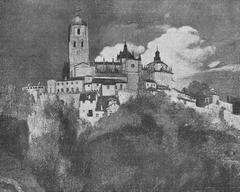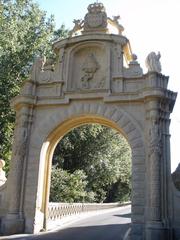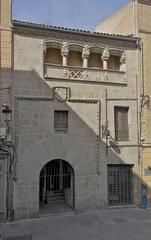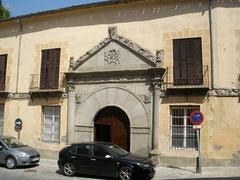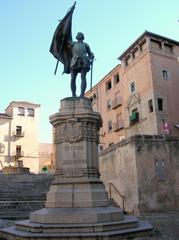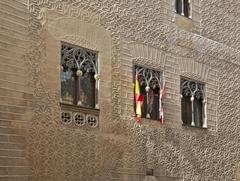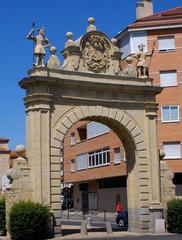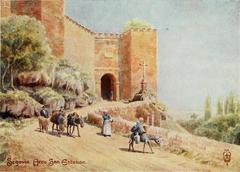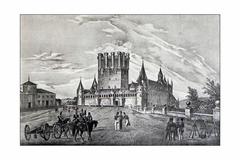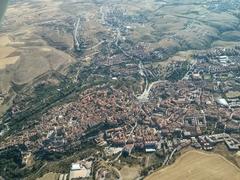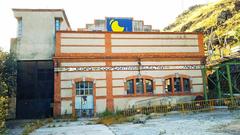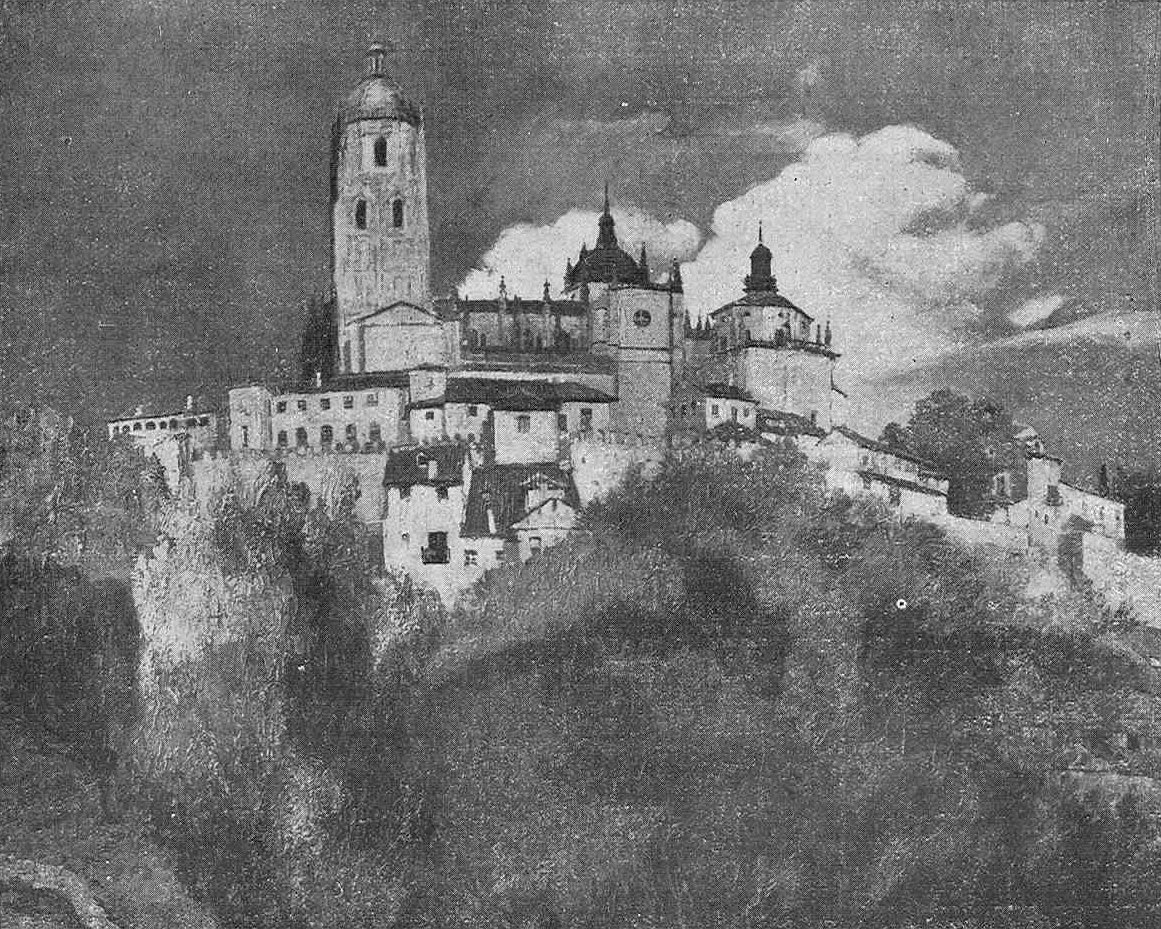
Segovia Cathedral: Visiting Hours, Tickets, and Comprehensive Guide to Segovia’s Historical Sites
Date: 14/06/2025
Segovia Cathedral, known as “La Dama de las Catedrales” (The Lady of the Cathedrals), stands as a breathtaking emblem of Spain’s religious, cultural, and architectural heritage. Located in the heart of Segovia’s historic Plaza Mayor, it is recognized as the last great Gothic cathedral built in Spain, masterfully blending Gothic, Renaissance, and Baroque styles over the course of more than two centuries. Its storied past, spiritual significance, and artistic treasures make it a centerpiece of Segovia’s UNESCO World Heritage old town and a must-visit destination for travelers.
To help you plan your visit, this detailed guide covers the cathedral’s history, architectural highlights, visiting hours, ticket information, accessibility, guided tours, nearby attractions, and essential travel tips.
Table of Contents
- Introduction & Historical Overview
- Early Origins and Predecessors
- Destruction and Rebirth: The Comuneros Revolt
- Construction and Architectural Evolution
- Cultural and Religious Significance
- Notable Features and Artworks
- Visitor Information
- Nearby Attractions and Travel Tips
- Frequently Asked Questions (FAQ)
- Visuals & Interactive Media
- Conclusion & Call to Action
- References
Introduction & Historical Overview
Segovia Cathedral rises majestically above Plaza Mayor, dominating the city’s skyline and symbolizing centuries of faith, resilience, and artistic achievement. Constructed from 1525 to 1768, its soaring bell tower, intricate stained glass, and over 20 richly decorated chapels offer visitors a journey through the evolution of Spanish sacred architecture. The cathedral’s survival and transformation after the destruction of its Romanesque predecessor during the Revolt of the Comuneros is a testament to Segovia’s enduring spirit.
Explore more about the cathedral on the official Segovia Cathedral website and travel resources like History Hit, Fascinating Spain, and The Tour Guy.
Early Origins and Predecessors
Segovia’s sacred architecture has ancient roots. The earliest known cathedral on the site was reportedly destroyed in 516. The 12th-century Romanesque cathedral, Santa María, was built near the Alcázar and served as a hub of religious and civic life until its destruction in the early 16th century (viajeraymochilero.com; fascinatingspain.com).
Destruction and Rebirth: The Comuneros Revolt
The Revolt of the Comuneros (1520–1522), a major uprising against Charles I of Spain, marked a turning point in Segovia’s history. The Romanesque cathedral, used as a defensive stronghold, was destroyed after a protracted siege. This loss prompted Emperor Charles V to decree the construction of a new cathedral in 1525, a project that would shape Segovia’s skyline for centuries (historyhit.com; wikipedia; fascinatingspain.com).
Construction and Architectural Evolution
Late Gothic Foundations
The new cathedral was built on Plaza Mayor, symbolizing a fresh start for Segovia. Designed by Juan Gil de Hontañón, the initial construction adopted Flamboyant Gothic style—soaring vaults, pointed arches, and intricate tracery fill the interior with ethereal light. The structure’s verticality and grandeur are hallmarks of late Gothic architecture (touropia.com).
Renaissance and Baroque Additions
Over time, Renaissance and Baroque influences were incorporated. The main façade features classical Renaissance ornamentation, while the dome over the transept, completed in 1685, marked a cautious engineering triumph. The Baroque high altarpiece (Retablo Mayor), designed by Francisco Sabatini and completed in the 18th century, is a neoclassical masterpiece adorned with colored marble and bronze (historytools.org; viajeraymochilero.com).
Cultural and Religious Significance
Segovia Cathedral is the seat of the Diocese of Segovia and remains an active center of worship, hosting liturgies, processions, and feast days—especially those honoring the Virgin Mary (Caballe Family). Its archives house invaluable manuscripts and musical scores, offering insight into Spain’s ecclesiastical and civic history (historytools.org). The cathedral’s integration with Segovia’s Jewish quarter and its presence at Plaza Mayor underscore its role as both a spiritual and civic landmark (fascinatingspain.com).
Notable Features and Artworks
- Tower and Spire: Originally crowned with a 25-meter mahogany spire, now replaced by stone after lightning damage in 1614. The bell tower stands at 90 meters, offering panoramic city views (historyhit.com).
- High Altar and Chapels: The cathedral houses a magnificent high altar, Renaissance choir stalls, and over 20 chapels adorned with paintings, sculptures, and relics (ItiMaker).
- Stained Glass: 16th- and 17th-century windows illuminate biblical scenes and heraldic symbols.
- Artistic Treasures: Works by Juan de Juni, Ambrosius Benson, and José de Churriguera.
- Unique Gargoyle: The “Devil’s Ear,” a legendary feature said to keep any secret whispered into it (hollymelody.com).
- Cloister and Museum: The cloister, salvaged from the old cathedral, and the museum display Renaissance paintings, religious artifacts, and Spain’s first printed book (adventureinyou.com).
- UNESCO World Heritage: Since 1985, part of Segovia’s UNESCO-listed historic center (hollymelody.com).
Visitor Information
Opening Hours
- April to September: 10:00 AM – 7:00 PM, daily
- October to March: 10:00 AM – 5:30 PM, daily
- Summer Extended Hours: Up to 9:30 PM on weekends (mid-May to mid-September) (HelloTickets)
- Last Admission: 30 minutes before closing
- Special Closures: Check the official website for closures during religious events and holidays.
Ticket Details
- General Admission: €4–€6
- Reduced Admission: €3–€5 (students, seniors)
- Free Entry: Children under a certain age, Segovia residents, Sundays after 2:00 PM (verify policies on-site)
- Tower Tour: From €7 per person; advance booking recommended (Tickets Palacio Episcopal Segovia)
- Purchase: Tickets available on-site and online
Accessibility
- Main nave and most areas are wheelchair accessible; ramps and elevators provided.
- Tower climb involves 190 steps and is not suitable for visitors with mobility issues.
- Assistance is available; contact staff in advance for special needs.
Guided Tours
- Cathedral Guided Tours: Offered daily in English and Spanish, providing historical and artistic context.
- Tower Tours: Guided, with limited group sizes; audio guides in multiple languages.
- Advance Booking: Highly recommended, especially during peak seasons (Travel Buddies).
Dress Code & Visitor Etiquette
- Modest dress required: shoulders and knees covered.
- Silence appreciated, especially during services.
- Photography allowed without flash; tripods may be restricted.
Facilities & Services
- Restrooms and a gift shop on-site.
- No cloakroom; travel light.
- Information panels and audio guides in several languages (English, Spanish, French, German, Portuguese, Chinese, Korean).
Nearby Attractions and Travel Tips
Within walking distance:
- Roman Aqueduct: Ancient engineering marvel.
- Alcázar of Segovia: Medieval fortress and royal palace.
- Plaza Mayor: Lively square with cafes and local shops.
Dining options abound in the old town, with specialties like cochinillo (roast suckling pig). Accommodation ranges from boutique hotels to budget guesthouses (Trip.com Moments). For a complete experience, visit early or late in the day and consider combining your cathedral visit with a walking tour of Segovia’s highlights.
Frequently Asked Questions (FAQ)
Q: What are Segovia Cathedral’s opening hours?
A: Generally 10:00 AM–7:00 PM (summer), 10:00 AM–5:30 PM (winter). Extended hours on summer weekends. Confirm on the official website.
Q: How can I buy tickets?
A: Purchase on-site or online via official ticketing platforms.
Q: Is the cathedral accessible?
A: The main nave is accessible; tower climb is not suitable for visitors with limited mobility.
Q: Are guided tours available?
A: Yes, in multiple languages. Book in advance for the tower tour.
Q: Can I take photos inside?
A: Yes, without flash. Respect restrictions during services.
Q: What else should I see nearby?
A: The Roman Aqueduct, Alcázar of Segovia, and Plaza Mayor are all close by.
Visuals & Interactive Media
Enhance your planning with:
- High-resolution images of the façade, stained glass, chapels, and panoramic tower views (with descriptive alt tags).
- Interactive maps of Segovia’s old town.
- Links to virtual tours on the official cathedral website.
Conclusion & Call to Action
Segovia Cathedral is not only an architectural marvel but also a vibrant testament to Spain’s history, faith, and artistry. With its layered past, stunning interiors, and spectacular views, it offers a multifaceted experience for every visitor. For updated visiting hours, ticket options, and event information, always consult the official cathedral website.
Ready to explore Segovia Cathedral and its surroundings?
Download the Audiala app for audio guides, itineraries, and real-time visitor updates. Discover more guides, follow us on social media for tips, and immerse yourself in the unforgettable heritage of Segovia.
References
- Segovia Cathedral: History, Architecture, and Visitor Information
- Secrets of the Cathedral of Segovia
- Segovia Cathedral History and Architecture
- Segovia Cathedral: A Symphony of Gothic and Renaissance Architecture
- What Makes Spanish Cathedrals Truly Magnificent?
- Segovia Cathedral: Visiting Hours, Tickets, and Architectural Highlights
- Segovia Cathedral Visitor Guide and Tickets
- Segovia Cathedral Tower Guided Tour
- Segovia Cathedral and City Highlights
- Guide to Segovia Itinerary and Cultural Highlights
- Popular Catholic Pilgrimage Sites in Spain
